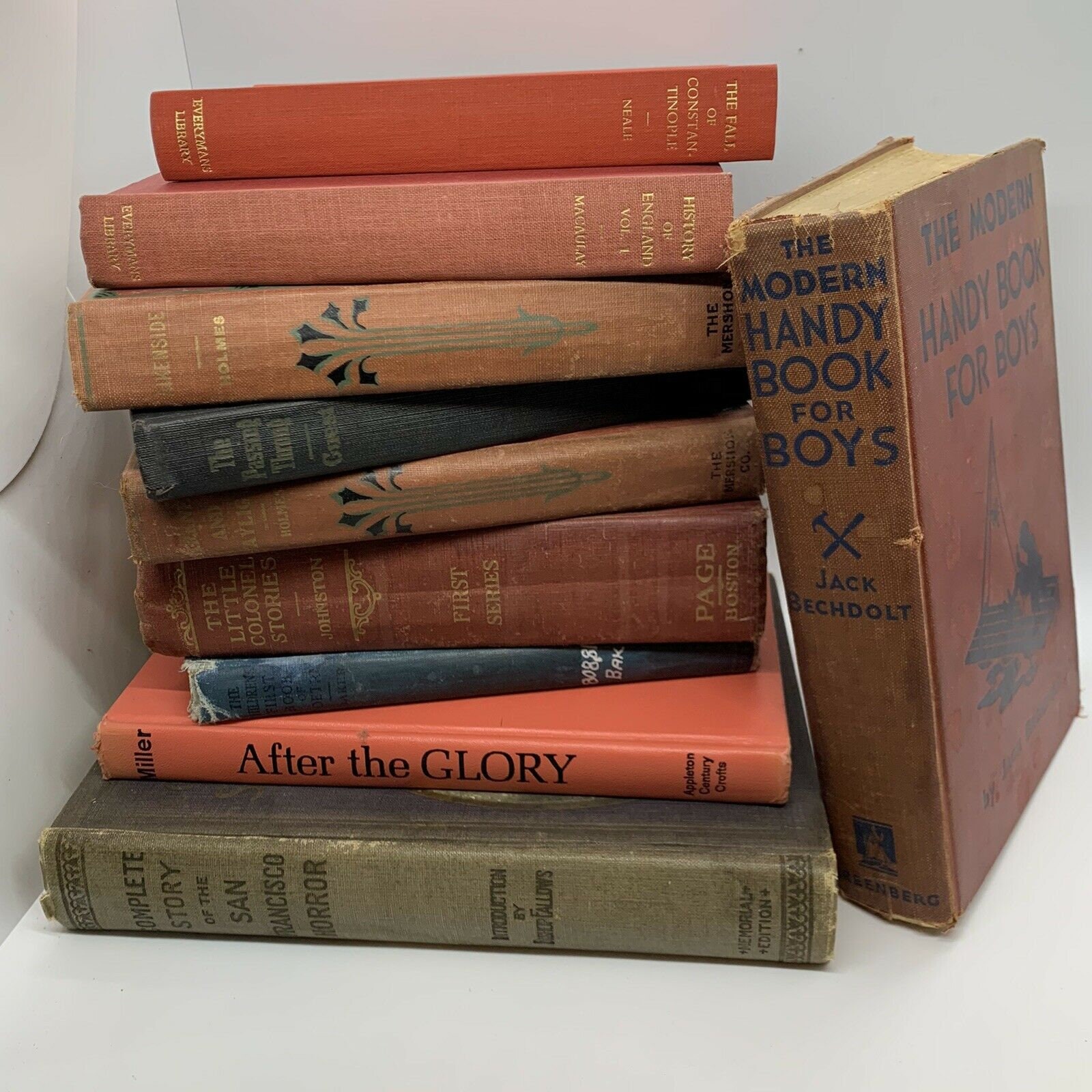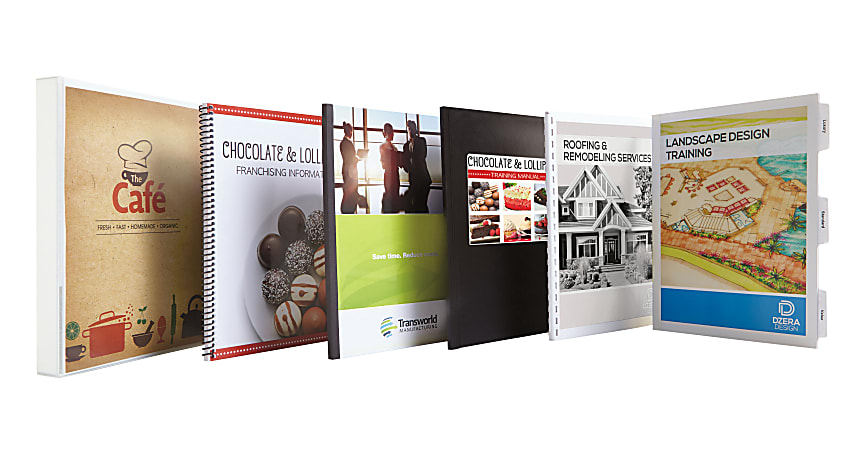A Comprehensive Overview to the Process of Hardbound Books Printing
When you commence the trip of hardcover publication printing, understanding the entire process is important. As you browse via binding and quality control, you'll locate that every choice influences the book's general allure.
Recognizing the Hardcover Book Framework
When you check out the world of hardbound publications, you'll promptly observe that their framework is intentional and distinctive. You'll find a material or natural leather covering, which not just improves looks however also adds to the publication's longevity.
The text block itself contains multiple trademarks, or folded up sheets, sewn with each other for stamina. You'll see that the back is reinforced, permitting a smooth lay-flat reading experience - hardcover books. Furthermore, guide's weight usually communicates a sense of high quality and durability
Hardbound books generally include a dust coat, which acts as an advertising and marketing tool while protecting the cover. Understanding these components helps you appreciate the workmanship behind hardbound books and their special allure in the literary world.
Manuscript Prep Work and Editing
Obtaining your manuscript all set for printing is essential, and it begins with proper format guidelines. You'll need to understand the editing procedure to improve your work and ensure it reverberates with viewers. And also, grasping proofreading methods can help you capture those troublesome mistakes before your publication goes to publish.

Manuscript Formatting Standards
Proper manuscript formatting is important for producing a professional-looking hardcover publication. Start by selecting a standard font style like Times New Roman or Arial in 12-point size. Use double-spacing throughout the paper to improve readability. Set your margins to 1 inch on all sides, offering your message space to take a breath. Number your web pages in the top right corner, and include your phase titles at the beginning of each new area. Use clear headings to indicate sections, and stay clear of too much format like bold or italics unless needed. Make sure to check your manuscript for uniformity stylishly, guaranteeing that every little thing from punctuation to spacing adheres to your picked guidelines. Complying with these steps will certainly establish a strong structure for your publication.
Modifying Process Fundamentals
Editing your manuscript is an important step that can transform it from an outline right into a refined final item. Begin by checking out your work seriously, focusing on structure, flow, and quality. Seek variances in your story, personality development, or argumentation. It's valuable to take breaks between rounds of editing to obtain fresh viewpoints. Do not think twice to cut unnecessary web content or rephrase unpleasant sentences; this will certainly improve readability. Take into consideration seeking feedback from trusted peers or expert editors that can offer useful understandings. Keep in mind, modifying isn't nearly taking care of errors; it has to do with fine-tuning your voice and ensuring your message resonates with readers. Embrace the procedure, and you'll see your manuscript sparkle.
Checking Strategies Introduction
As soon as you've polished your manuscript with editing, the next step is to assure it's correct that can distract viewers. Beginning by pausing after editing and enhancing; fresh eyes capture errors better. Review your manuscript out loud-- this assists you hear awkward phrasing and spot typos. Use electronic devices like spell checkers for initial scans, however do not depend only on them. Think about publishing your manuscript; reading theoretically can expose errors that displays miss. Emphasis on one kind of error at once, whether it's punctuation or grammar, to prevent sensation bewildered. Get a relied on buddy or expert proofreader to supply a fresh viewpoint. Their feedback can highlight issues you might neglect.
Designing guide Cover and Interior
When you're developing your book cover and interior, you'll want to focus on vital layout components that record your audience's attention. Choosing the ideal typography designs and carefully selecting colors and imagery can make all the difference in sharing your book's theme. Let's explore how these options can boost your job and bring in viewers.
Essential Layout Components
Creating an appealing book cover and a properly designed interior is essential for bring in readers and boosting their experience. Select shades and pictures that reflect your book's theme and state of mind.
A tidy, organized style aids readers navigate easily. Remember, a cohesive layout throughout your book promotes an expert appearance that can significantly affect a viewers's decision to choose it up.
Selecting Typography Designs
Typography plays a necessary duty in both the publication cover and interior design, shaping exactly how visitors perceive your web content. When selecting typography styles, consider your book's genre and target audience. Think about hierarchy-- utilize various designs for headings and body text to assist visitors easily via your work.
Shade and Images Choice
Selecting the right shades and imagery is crucial for catching readers' focus and communicating your book's motifs. Begin by considering your genre; vivid colors might benefit a children's publication, while helpful hints soft tones suit an enigma novel. hardcover books. Usage images that resonates with your web content-- pictures, illustrations, or abstract designs can boost your message
Think of the feelings you wish to stimulate. Warm shades can produce enjoyment, while cool shades typically communicate peace. When developing the cover, make sure the imagery does not overwhelm the title and writer's name; clarity is key. Inside, use constant color plans that enhance your typography. This cohesive strategy not only raises your book's aesthetic yet also enhances the viewers's experience, making it much more unforgettable.
Choosing the Right Paper and Materials
When choosing paper and materials for your hardcover book, it's vital to consider how they'll affect the overall look of your job. Start by choosing the right paper weight; larger stock commonly conveys quality and durability, while lighter paper can develop an extra fragile touch. Think about the surface as well; shiny paper enhances photos and shades, while matte can provide a sophisticated, understated look.
Towel, natural leather, or printed paper can set the tone for your publication. In addition, believe regarding the binding materials; using high-quality adhesive warranties your publication lasts.
Ultimately, the selections you make below show your vision, so take the time to example various materials (hardcover books). Your selections will assist produce a book that's not just visually appealing yet practical and also resilient
The Printing Process: Techniques and Technologies
A variety of printing strategies and innovations can bring your hardbound book to life, each offering special advantages. Digital printing is a popular option for short runs, permitting for fast turn-around and economical remedies.
For unique impacts, you may consider strategies like foil marking or embossing, which can add an extravagant touch to your cover. Additionally, you can decide for numerous inks, consisting of environmentally friendly choices that deal with eco conscious readers. Comprehending these methods assists you make educated decisions, ensuring your hardcover publication not just looks terrific however also satisfies your manufacturing requires successfully. Pick the appropriate strategy to boost your publication's allure and influence.
Binding Techniques for Hardcover Books
Numerous binding methods can change your hardcover publication into a sturdy and appealing product. An additional method is the excellent binding, which utilizes adhesive to hold the pages with each other, allowing for a streamlined spine yet less durability contrasted to case binding.
You may also consider spiral binding, which enables your publication to lay flat, making it suitable for workbooks or manuals. Each binding method has its advantages and fits various needs, so believe concerning your publication's purpose and audience when picking the best choice for your task.
Quality Control and Final Touches
After selecting the right binding method for your hardcover book, quality assurance ends up being essential to confirm your final item meets your expectations. Begin by checking the published web pages for any errors or disparities in color and design. You do not wish to miss out on any kind of typos or misprints that can influence your viewers' experience.
Following, examine the sites binding integrity. Verify the pages are securely attached and that the spine is durable. A well-bound book not only looks professional but additionally feels durable in your hands.
Additionally, take notice of the cover. Try to find any type of scuff marks or misalignments in the art work. If you've chosen special finishes like embossing or foil stamping, make certain they're applied continually throughout all duplicates.
Finally, carry out a comprehensive examination of the entire batch prior to relocating to distribution. This means, you can confirm that every publication shows your high criteria.
Often Asked Questions
The length of time Does the Hardbound Book Printing Refine Generally Take?

What Is the Minimum Order Quantity for Hardcover Books?
The minimum order amount for hardbound publications normally starts around 100 duplicates, but it can differ based upon the printer. You must inspect with your chosen printing service for their details needs and prices.

Can I Publish Hardcover Books in Custom-made Sizes?
Yes, you can publish hardbound publications in custom sizes. Numerous printing click site solutions use adaptability with measurements, allowing you to choose a format that suits your job. Just verify the requirements prior to positioning your order.
Exist Eco-Friendly Options for Hardcover Book Printing?
Yes, you can find green alternatives for hardbound publication printing. Lots of firms make use of recycled products and lasting inks. Just ask your printer regarding their eco-friendly methods to ensure your job lines up with your environmental values.
What Are the Costs Connected With Hardbound Publication Printing?
When considering hardcover book printing expenses, you'll need to consider products, style, and printing approaches. Added expenses like shipping and binding can also affect your total spending plan, so strategy as necessary for your project.
When you begin the trip of hardbound book printing, understanding the entire process is necessary.A selection of printing techniques and technologies can bring your hardbound book to life, each offering distinct advantages. Exactly how Lengthy Does the Hardbound Publication Printing Process Generally Take?
The hardcover book printing process usually takes around 2 to 6 weeks.Yes, you can find environmentally friendly options for hardbound book printing.